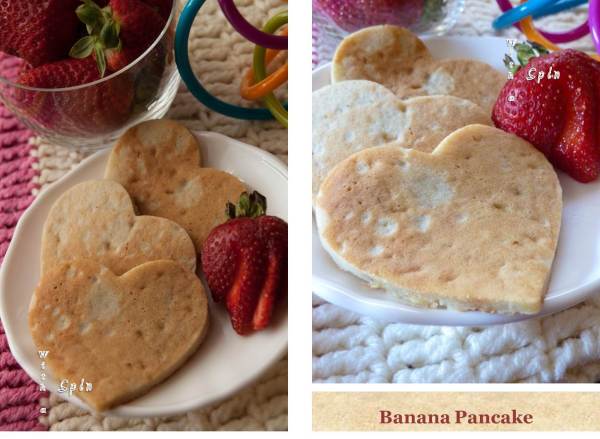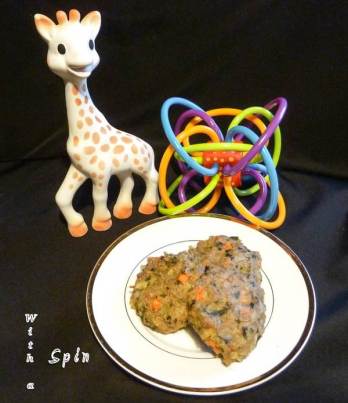I had almost forgotten the taste of soups made from homemade broth. My mom came and stayed with us for a month after R was born. While she was with us, she made me soup with freshly cooked broth frequently. There was no turning back after I remembered the taste of broth made from scratch. Ever since then, I stopped buying the boxed broth(I stopped buying the canned one long before), be it chicken, beef or vegetable.
Category Archives: Baby Friendly
Ravioli Night
 I promised in my beet pancake post that I will be sharing more beet recipes. Here you go.
I promised in my beet pancake post that I will be sharing more beet recipes. Here you go.
Though I made this for my baby girl and filing under “Baby Friendly” this is a delicious recipe and great for adult taste buds too. You may have to adjust the seasoning a bit if you are preparing this for the whole family.
A Treat
Everyone deserves a treat once in a while. We, 99% of the time, do not give anything sugary to our one year old daughter, yet, for obvious reasons. She gets all her sugar from fruits, vegetables and other natural ingredients used to make her meals. We haven’t decided when we are going to start adding sugar to her food. I suppose, as she becomes more and more interested with table food, it will eventually happen. Until then, no sugar for her.
Baby’s first fish cake
Fish is a good source of Omega 3. Fish is healthy and nutritious. White fishes such as Haddock or Cod is mild and has less “fishy” smell and are great choices for little ones. I used cod but I suppose other fishes can also be substituted for this cake.
Beef Patty for babies
Pincer grasp is an exciting fine motor development for babies. This important skill is the first step to self-feeding, reading, drawing, writing and caring for themselves. Though babies start developing this skill by 3 months, it may take at least a year for a baby to pick up small objects between thumb and forefinger. Between 8 to 12 months babies fine tune the grasping reflex. One of the great way to encourage and fine tune this skill is by offering small finger food to baby.
Sweet, Savory, Yummy
I would have never thought of cooking meat and fruit together although I verily enjoy fruit salsa or fruit chutney as a condiment to meat dishes. Then, there came the baby and the time to introduce her to solid proteins. Her pediatrician recommended mixing fruit puree to meats when we first introduce chicken or beef to our then 7 month old baby girl.
Fries, littleones?
Starchy sweet potatoes are so versatile. Although yellow-orange flesh is most common, there are many varieties of sweet potatoes with flesh and skin that can be white, cream, yellow, deep purple, orange or pink. Sweet potatoes are a great source of beta-carotene and provide children with sizeable amount of daily vitamin A needs. In order to enjoy the full benefit of beta-carotene, it is important to add some fat in sweet potato dishes. Recent studies show that, a healthy amount of fat(0.15 oz) per meal significantly increases uptake of beta-carotene from sweet potatoes.
Baby’s First fruits
No doubt, the past generations were introduced to solids much earlier than we introduce solids to our infants these days. According to American Academy of Pediatrics (AAP), babies should only be breast-fed and/or formula fed and healthy babies do not need water/juice until solids are introduced. They get all the fluids they need from the breast milk and/or formula.
Babies love the sweet taste of fruits. Some fruit needs to be first cooked and then puree before offering to baby’s such as apple, pear, etc. Others can be just mashed and given to babies. For example, mangoes and bananas do not need to be cooked first. Ones baby’s adjusted to one fruit for at least four days a new food can be introduced. Also, mild herbs and spices, say mint, cinnamon, nutmeg, etc., can also be added to enhance the flavor of a fruit if you wish. When it came to choose the first fruit, we choose apples for our daughter.
Ingredients:
3-4 Apples
Cinnamon powder (Optional)
Steps:
- Wash and cut apples into quarters. Remove the core.
- Simmer apple quarters in VERY little water until tender.
- Let cool the apples, peel and either mash or puree depending on the age of your child.
- Offer as is, or add to yogurt and/or oatmeal.
Notes :
i. Instead of simmering, the apples can be baked in 350 degrees for 45 to 60 minutes depending on size and oven temperature.
ii. Apple belongs to the “dirty dozen” family, so I would recommend peeling them before simmering if not using organic apples. I use all organic produce for the baby and peel the apple skin after cooking to retain more nutrition.
iii. Following the same process, other fruits such as pears, plums, peaches, etc. can be puree.
iv. I do not add additional water in the food processor, but can be added if necessary.
v. Apple puree freezes very well.









